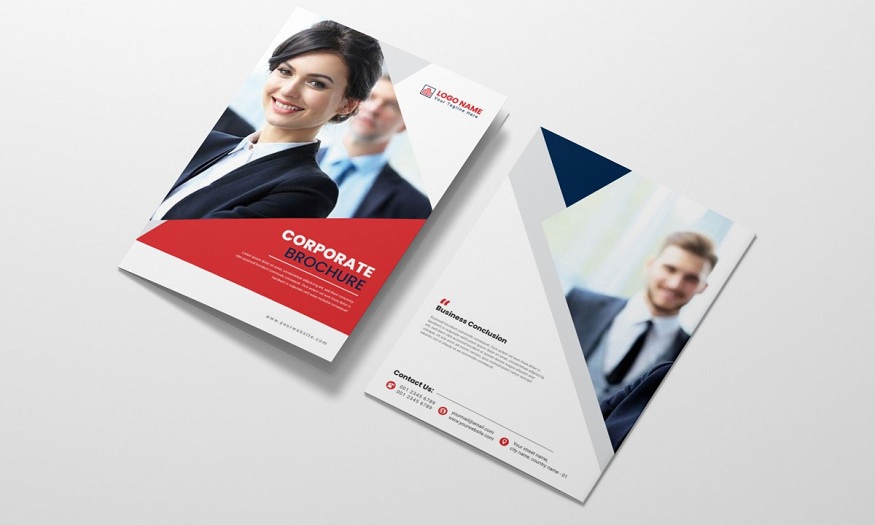Brochure design is vital in creating a brand’s identity and delivering its message to the rest of the world. The fundamentals of brochure design are the aspects that make up a well-crafted and attractive piece of marketing collateral.
In today’s competitive enterprise environment, creating a unique and specific brand is more crucial than ever. This article examines the importance of brochure design as a potent branding tool. It focuses on how well-crafted brochures contribute to brand identification, consistency, and successful storytelling.
Basics of Brochure Design
Brochures are available in a variety of formats, including bi-fold, trifold, gatefold, and Z-fold, each with its own set of presenting possibilities. Typography, images, color, and layout is critical for brochure design. Typography improves readability and sets the tone for the brand, whilst high-quality imagery can captivate the audience and effectively deliver the company’s message.
Color can be used strategically to help with branding and creating specific emotions. A well-organized and visually appealing layout directs readers through the text, ensuring they can easily find the information they need. Effective brochure design strikes a balance of these features, and its success is judged by its ability to communicate the essence of the business.
How do Brochures Contribute to Branding?
Brochures contribute significantly to branding in numerous ways:
Creating a Strong Visual Identity
Consistency is essential for developing a strong visual identity. It entails keeping logos, color palettes, and typography consistent across all brand assets. Brochure design services are critical in this process since they ensure that brochures adhere to the agreed brand criteria. These services expertly incorporate the company’s distinct visual components into the design of the brochure, reinforcing brand recognition.
This consistency is carried over from brochures to websites, social media, wrapping, and other marketing assets. Customers build trust and familiarity with the brand when they encounter these integrated elements, whether in brochures or other materials, which is critical for long-term brand success.
Conveying Brand Message
The brand’s essence must be distilled into a concise and appealing narrative when conveying the message through brochures. It entails carefully selecting words and images representing the brand’s beliefs, mission, and distinctive selling points.
A well-crafted brand message in brochures not only informs but also resonates with the target audience, leaving an indelible impression. It should answer the core question of “why this brand matters” and give the audience a compelling reason to engage with it further.
Enhancing Brand Recognition
Increasing brand identification through brochures is accomplished by including recognizable brand features such as logos, color schemes, and typography. These well-known visual cues establish a strong connection in the audience’s minds.
When recipients come across brochures with these consistent branding features, they immediately recognize and associate with the brand. It leads to improved trust and recall, increasing the likelihood that customers would choose the brand over competitors when purchasing.
Providing a Tangible Experience
Brochures provide a concrete experience in the digital age, allowing clients to interact with the business physically. Holding and flicking through a brochure engages numerous senses and leaves a lasting impact.
This tactile experience cements the brand in the customer’s mind, increasing the likelihood that they will recall and connect with the brand when making a decision. It adds a one-of-a-kind, long-lasting, and multimodal layer to the brand’s engagement approach.
Engaging with the Target Audience
Engaging the target audience via brochures entails adapting the content to their requirements and interests. Customization is where creative design services come into play. Brochures can be developed to resonate with the audience’s demographics and interests, making the information more approachable and appealing.
Brochures become a personalized medium, building a closer connection between the company and its intended audience, whether by using language that speaks to their issues or providing graphics that correspond with their objectives.
Encouraging Action
Brochures are practical tools for motivating people to take action. Clear and compelling calls to action (CTAs) within the brochure encourage readers to perform specific actions, such as visiting a website, purchasing something, or contacting the company.
Brochures guide prospective consumers towards engaging with the business by giving a direct and practical pathway, translating their interest into tangible outcomes and establishing more profound relationships.
Conclusion
To sum up, brochures are significant assets in the world of branding. They contribute significantly by developing a strong visual identity, communicating the brand’s message, and increasing recognition. Brochures provide a tactile experience that encourages deeper audience involvement, whereas well-crafted design services assure targeted communication. Furthermore, they direct readers to meaningful engagements with the company through unambiguous calls to action.

